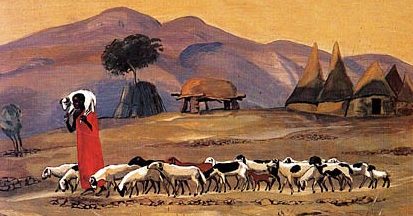
When we hear the image of a shepherd mentioned what often enters our minds is a person tending the flock of sheep, cows, goats, camels and other kind of animals. We probably experience in our imaginations the mowing of cows and all the noise from the rest of the herd. We are again likely to feel in our imaginations the movement of the herd, tick-tuck-tick-tuck-tick-tuck… and all other kind of images that express the situation and the environment of a shepherd and his flock ending to the water fountain for refreshment or searching for the grass. Probably we may also think of tethered animals in our homes and how we shepherd them.
This Fourth Sunday of Easter is always kept as Good Shepherd Sunday, when we hear from the tenth chapter of St John’s Gospel. This image of Christ the Shepherd caring for his followers has been used since the earliest years of Christianity. In the biblical way of shepherding, the shepherd leads the flock, calling each sheep by name. The sheep know and trust the voice of their shepherd, following him wherever he leads: a fine model for the love of Jesus for his disciples – and for each of us.
Paul and Barnabas (First Reading), in the face of jealousies, and expulsion by the Jews, reach out to the Gentiles with the good news of salvation. They are building the communities into a true sheepfold. Those who accept the good news will find joy, and the Psalm praises God the Shepherd, the source of this joy.
John, in the Second Reading, describes a vision of God, as Lamb, shepherding the saved from every nation and in the Gospel he reveals the manner of that shepherding – with a great and tender care.
Christian Action this week:
Place yourself ever more deeply under the great care of God who, for you, is both Shepherd and Lamb.
Joy and Peace.







